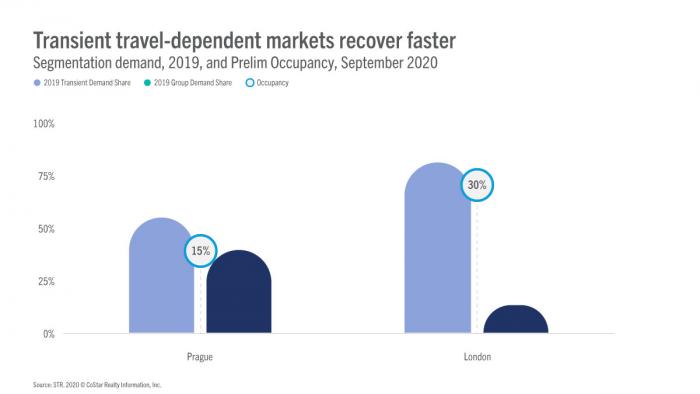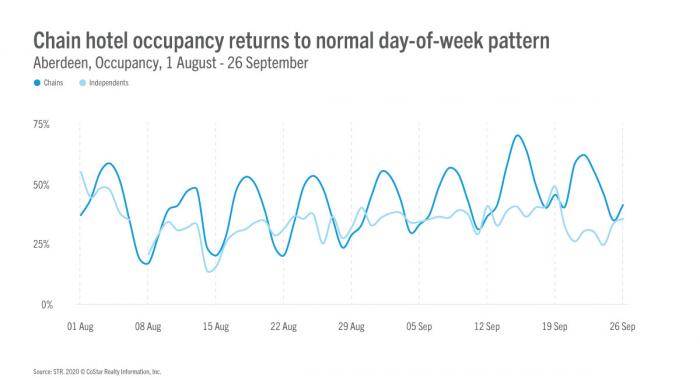In a recent webinar on European hotel performance, Robin Rossmann, STR Managing Director, addressed the return of business travel, a key consideration for hoteliers with summer now in the past and conference season beginning.
Rossmann emphasized that a safe return to office is the linchpin to unlocking business demand. Once employees are back in office, travel will resume in stages depending upon method of travel, reason for travel, and industry sector. While hoteliers have little control over some of these factors—physical location and market industry mix are relatively fixed inputs—the sector can influence other key elements of business travel recovery.
Group demand last to return
There are three key reasons for business travel: client meetings, internal meetings, and industry conferences. Client and other sales-driving meetings will be first to return. As Rossmann pointed out, “if you’re not meeting your customers face to face, I can promise you that somebody else will.” Industry conferences, trade shows, and other high-volume events will be last to return, pending an end to restrictions on gathering size as well as some degree of economic recovery.
While group demand is still missing in action—European hotels sold 4.8 million group room nights in August, a 77% decline year over year—a look at 2019 segmentation trends lends insight into how swiftly markets can expect to recover. Markets reliant on transient demand, a segment that includes both business and leisure travelers, should recover occupancy faster than markets geared toward group demand.

